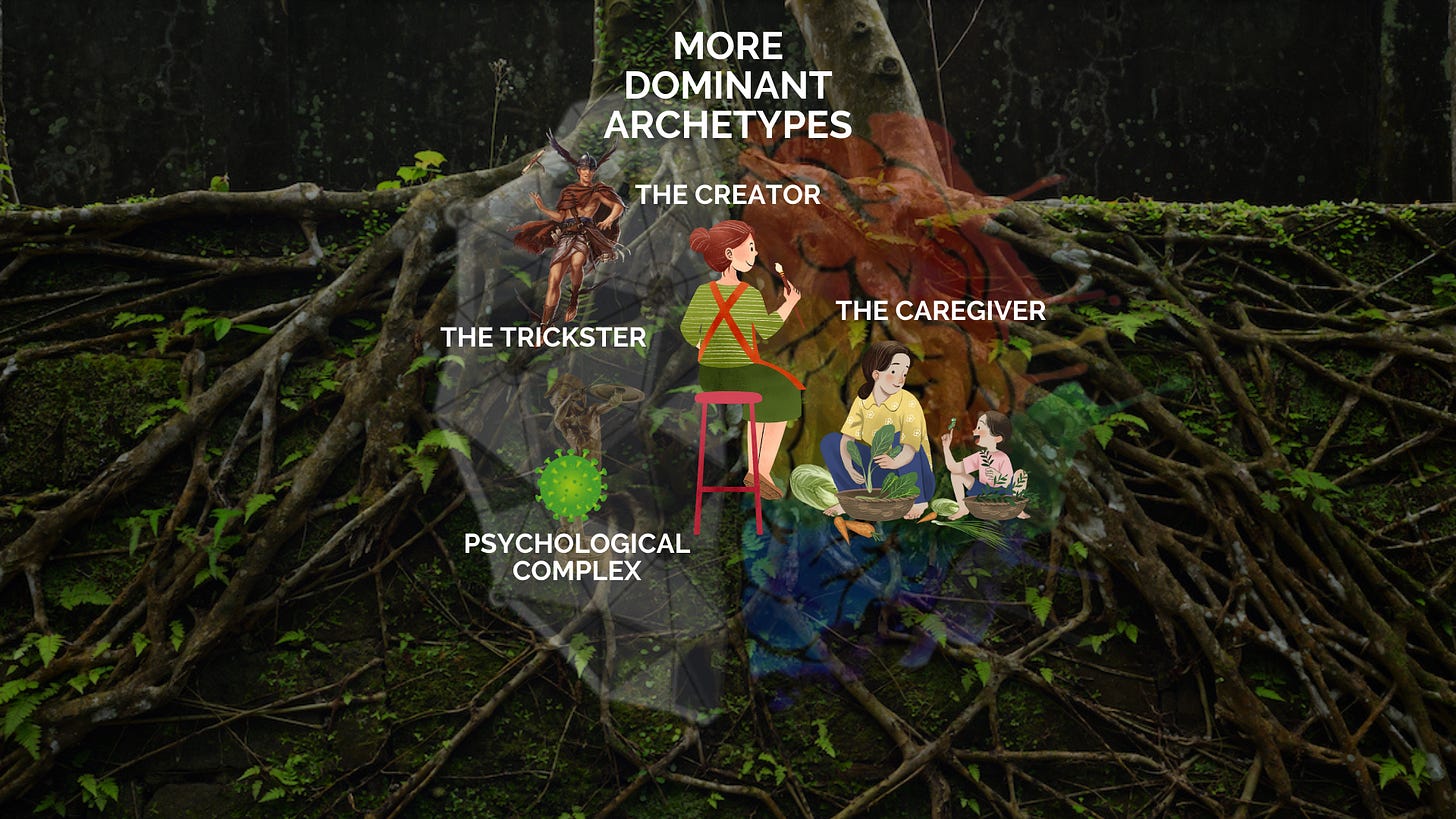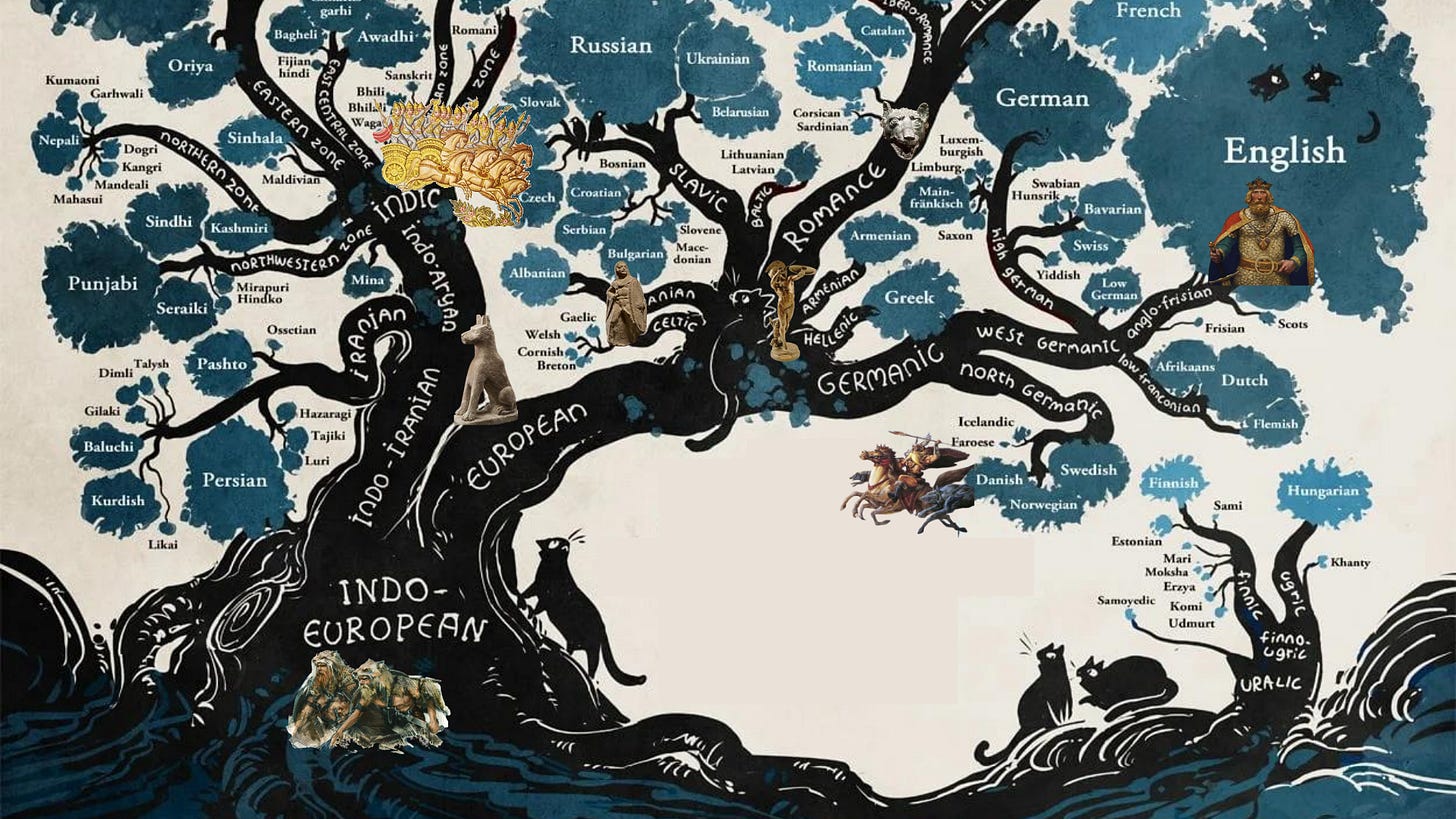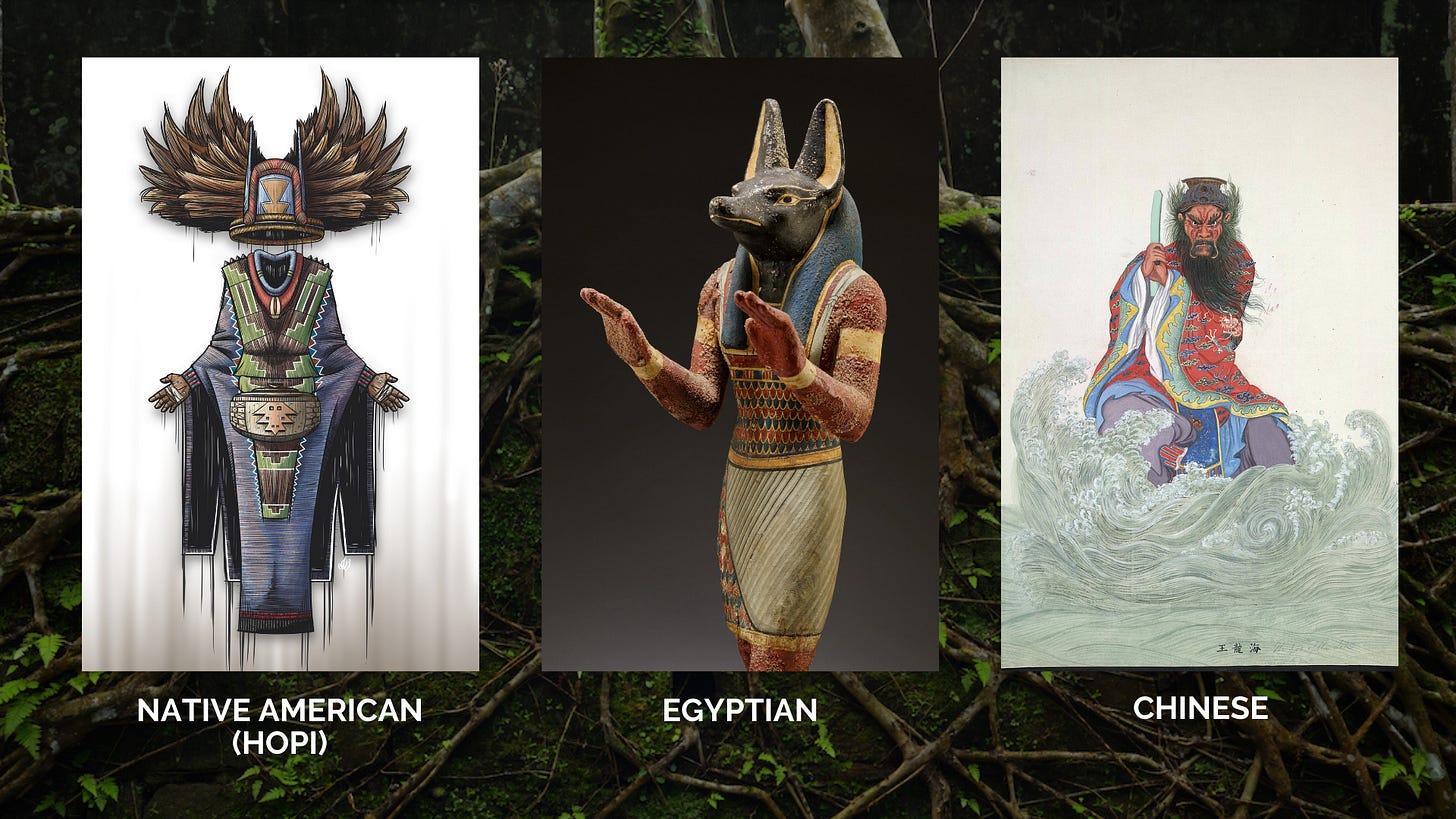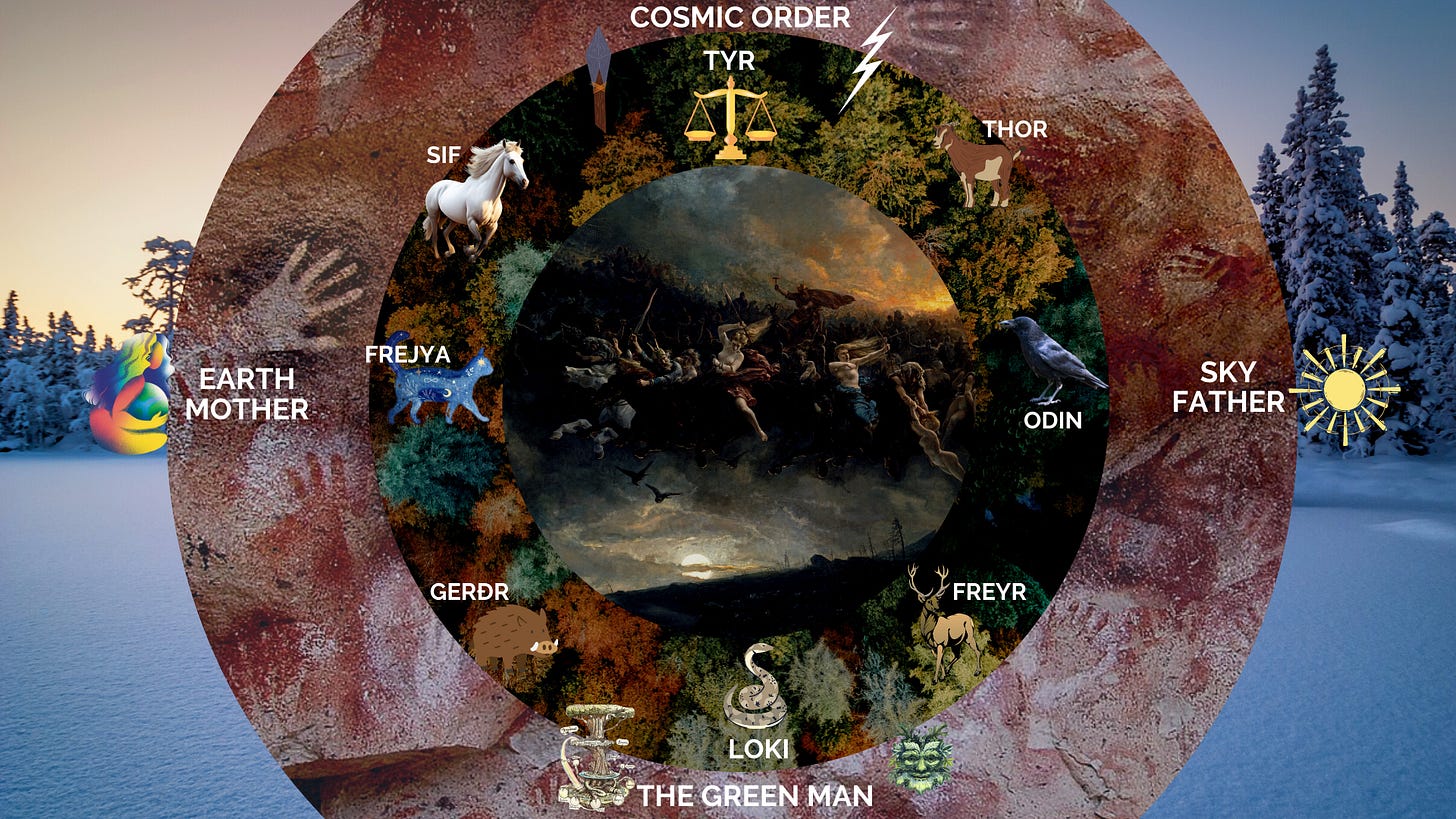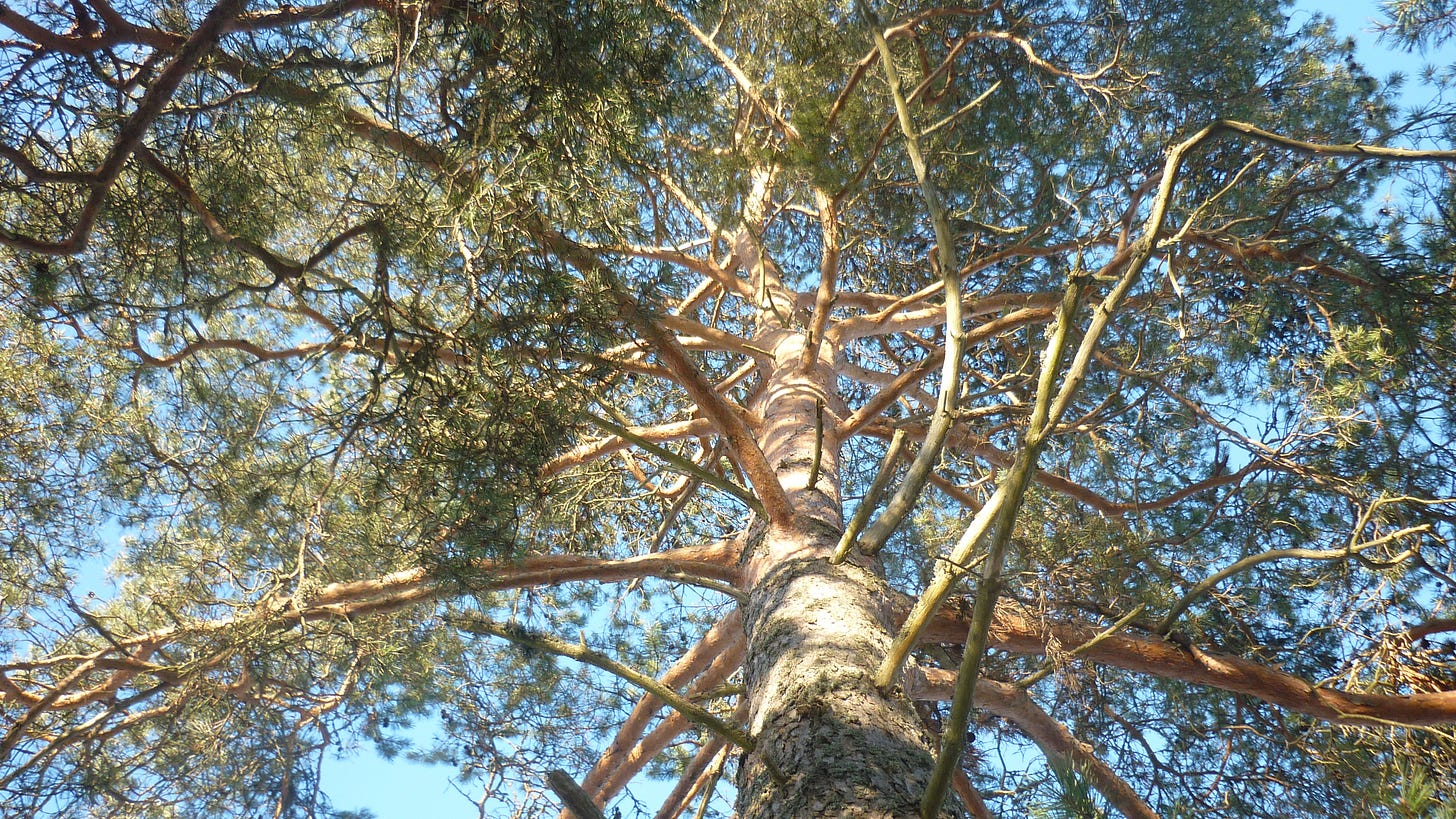Archetypes and Cultural Inheritance
Within today's article I want to go into archetypes. Specifically going into why certain cultures and people tend to have certain archetypes over others, and what this has to with our ancestral past. So when it comes to archetypes. They are deeply tied to culture and ancestry, inherited through generations. The archetypes within the collective unconscious are dependent on the specific culture and ones ancestors. As these are inherited. Where specific cultural versions are clothed in specific cultural garb, but underneath it, the essence of it goes way back and is tied to ones ancestors. Archetypes are not isolated symbols but are deeply rooted in specific cultural contexts and transmitted through generations.
For Indo-European people this goes back to the Proto-Indo-European culture, and the archetypes prevalent within that Neolithic culture that forms the bedrock of the archetypes within the later Indo-European cultures. Though on an even bigger scale this goes all the way back to even earlier times, and as such all humans share these archetypes. The difference between different cultures, civilisations and tribes, and what archetypes are more in the focus, and what is associated with them, including their mythological narratives, are due to for instance cultural, historical and environmental factors. Next to other factors both within the culture, and between cultures. So even though we as humans all share the same archetypes as a whole, such as the mother, father, child, hero, nature related archetypes and other archetypes I did not mention here, these are coloured by these factors. As such these factors also cause a particular focus on certain archetypes over other ones. So ones valued and others who are avoided.
Throughout very many generations, this sets up within a particular culture or tribe of people, what we could call a specific collective psyche, that has it's own Collective Unconscious with specific archetypes more to the forefront, who are deemed more important to that culture, over other archetypes that do exist, but have less influenced that culture over many generations. The collective unconscious being a reservoir of shared, universal experiences and symbols that are inherited across generations. Archetypes being innate, universal symbols or themes present in the collective unconscious, which influence human thoughts, feelings, and behaviours.
Archetypes within the Individual
Similarly we as individuals inherit all archetypes, but particular archetypes, due to our own specific ancestral line, can have an influence on what particular archetypes are more dominant within our psyche, versus which ones are less influential. Generally we tend to have certain inherited dominant archetypes within our psychological make up. Which represent important parts of our authentic self. But influences of those not directly related by blood, but responsible of raising us as children, and also environmental factors, including trauma can have an effect on the expression of these archetypes, and introduce other archetypes as well, next to potentially creating complexes.
So there can be an interplay between factors, where for instance the Warrior archetype becomes repressed through trauma. Let's say a psychological complex associates assertiveness with bad us being unfairly punished, when we speak up about being mistreated, then this can lead to a repression of this assertiveness. Where another archetype can take on a compensatory role, and can become a way of coping with the repression.
However a part of our authentic whole becomes repressed, and especially if this is connected to a more dominant archetype this can lead to for instance depression. Where trauma, in particular, can also imprint certain archetypal patterns more strongly, influencing emotional responses, coping mechanisms, and behavioural tendencies. Where it can lead to certain archetypes to become more dominant due to certain traumatic experiences. This becoming a response to the trauma, introducing this archetype and skewing their initial trajectory. Next to the individual then often also dealing with psychological complexes.
Traumatic experiences can introduce new archetypal patterns as a way of coping or adapting to the challenges presented by the trauma. These new archetypes may take on compensatory roles or serve as protective mechanisms. These compensatory roles may become part of the individual's psychological landscape or could be temporary. Especially if the trauma is long term, this can really make such introduced archetypes more stronger in the individual. Even after recovery, the newly introduced archetypes may still remain part of the individual's psychological makeup. Healing doesn't necessarily mean erasing or eliminating these patterns; rather, it involves creating a more balanced and integrated relationship with them.
Next to this certain archetypes may also be more pronounced or emphasized in our individual psyches due to the cumulative influence of our familial lineage (think a certain profession being common). Where caregivers, mentors, or influential figures in early life also contribute to the formation of our psychological patterns. These influences can introduce or emphasize certain archetypes in our psyche, further contributing to the unique composition of our individual unconscious. Regarding the more dominant archetypes within our psyche, these are not just archetypes that we just associate with, nor a persona (social mask or role) for the individual. In contrast, dominant archetypes go beyond mere social roles; they shape the core personality of an individual. These archetypes symbolize innate traits and behaviours that feel natural to the individual, influencing how they navigate the world and relate to themselves and others on a deeper, more authentic level.
Even though our modern society is not pagan any more, this does not mean that these archetypes are not present within our cultures. Merely relegated to the Collective Shadow (repressed and marginalised aspects of the culture). This is where Cultural Complexes also play an important role. Cultural complexes can arise as a result of social and cultural factors that impact the expression and integration of archetypal patterns. These cultural complexes can be seen as distorted versions of archetypal themes that arise due to social or cultural factors such as trauma, environmental factors, or cultural norms and values. And this shapes our current collective and cultural attitude towards particular archetypes.
However as much as for a particular person the ability to express the dominant archetypes is important for their psychological well-being, this is also true for the Collective Psyche. If we look at Western Civilisation within the time frame of the Neolithic to Modernity, we can see that the majority of what shaped the Indo-European collective psyche is the Proto-Indo-European foundations, and the archetypes connected to that. Spanning from 5000 years ago in the Neolithic to roughly 1000 years ago, in the middle ages, as folk beliefs were still strong till then. Hence the archetypes linked to the Proto-Indo-European foundations have shaped our ancestors, and with that our own psyche for a very long time. At least 4000 years, if not longer. As such, these connected archetypes that also include the Sovereignty Goddess, Wotan and the Koryos pattern, Dionysus, Wild Nature Spirits, the Wise Old Man and Wise Old Woman are important aspects of the Collective Psyche of the Indo-Europeans.
This is similarly the case when it comes to other cultures as well. Native American tribes as much have their own particular archetypes that are more pronounced in their culture, where within Egypt or China they have their own archetypes that are more in the fore front there. Which is a natural development within these cultures, and as much is connected to the individuals within the culture and their shared relationships to each other, and the relationship that culture has with the land and environment that they inhabit. Which is why within a Indo-European context serpents can become with holders of waters, where in China serpents and dragons are the bringers of waters. The change being related to the context of their environment, droughts being a problem, versus floods.
What I then also want to highlight with this is that for all the different cultures, the archetypes that are more pronounced are such due to the long term adaptations made by very many generations to that particular environment, and the connected social relationships, both within the tribe, and between the tribe and their environment. If we thus would come in with other ideas, and start to label certain such archetypes as bad, and push them into the Collective Shadow by demonizing them, we end up disrupting this harmonious balance, that every generation within said culture is always re-establishing and rebalancing. As ones environment also changes over time. Whilst keeping the essence of these archetypes alive. As such the manifestations of these archetypes differ overtime but their general pattern remains.
The key being to keep this pattern in it's healthy and integrated manifestation, that is aligned to the times that the people live in. Imposing external judgments on these archetypes can disrupt this delicate balance and lead to internal conflicts within the culture. This disruption may affect the psychological well-being of individuals and the collective cohesion of the society. This influence may lead to a sense of cultural alienation, loss of identity, or even psychological distress, as individuals grapple with conflicting external judgments about their deeply rooted symbols.
The demonization of crucial archetypes can lead to a form of cultural trauma. This can create a loss of continuity. Which can create a void in the collective psyche, impacting the sense of belonging and shared history within the culture. Leading to a meaning crisis and belonging crisis. This can further also lead to internal psychological conflicts, a sense of shame, or even self-rejection, within that culture. Which can fragment the social fabric by fostering divisions and tensions within the community. Each culture and individual contributes to the diversity and richness of the human experience through their unique archetypal expressions. And we need to celebrate and respect this expression. Otherwise we end up with a loss of the unique insights, wisdom, and perspectives embedded in different archetypal patterns. They are all part of the same tree.






